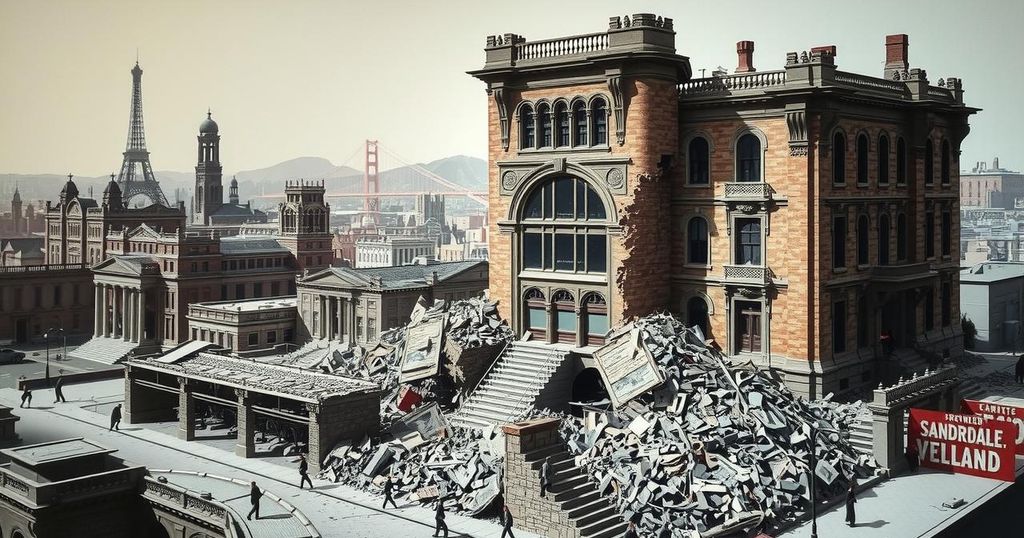Commemoration of the 1906 San Francisco Earthquake

The 1906 San Francisco earthquake, with a magnitude of 7.9, occurred on April 18 and caused extensive damage across San Francisco and neighboring towns. Following the quake, a massive fire devastated the city, resulting in over 3,000 deaths and significant property destruction valued at approximately $350 million. The event prompted major reconstruction efforts, with an emphasis on building resilience against future earthquakes.
The San Francisco earthquake of 1906, which occurred on April 18, at 5:12 AM, was a devastating seismic event with a magnitude of 7.9. This disaster originated along the San Andreas Fault, which extends approximately 270 miles from San Juan Bautista to Southern Humboldt County and potentially further offshore. The tremors were felt across a wide area, spanning from Los Angeles to Coos Bay in Oregon. The ensuing catastrophe caused extensive damage in San Francisco and surrounding locales such as San Jose, Salinas, and Santa Rosa.
Prior earthquakes had troubled San Francisco in 1864, 1898, and 1900, but none compared to the calamity of 1906. Promptly after 5:00 AM, a noise described as “like the roar of 10,000 lions” echoed as the entire city trembled. The infrastructure was severely impacted; cable cars halted, City Hall collapsed, and the glass roof of the Palace Hotel shattered.
In addition to the quake, a massive fire erupted, fueled by the destruction in the business district and quickly spreading to areas such as Chinatown and North Beach. This rampant inferno persisted for four days until rain extinguished the remaining ashes, ultimately obliterating more than 500 blocks, equivalent to around four square miles of the city. Rough estimates suggested that the property damage totaled approximately $350 million, along with the destruction of 28,000 buildings.
Initially, estimates indicated that 700 individuals lost their lives; however, current assessments suggest the death toll surpassed 3,000. Moreover, approximately 250,000 residents were rendered homeless, with many seeking refuge in Golden Gate Park and nearby communities. The swift response of relief efforts brought shipments of essential food and clothing, alongside significant monetary contributions from foreign nations, including Europe, Japan, China, and other areas of the Americas.
Following the disaster, immense reconstruction efforts led to the city being rebuilt with enhanced earthquake and fire-resistant structures. Civic development plans flourished, and in 1915, San Francisco showcased its recovery and revitalization during the Panama-Pacific International Exposition. Comprehensive geological studies stemming from this earthquake contributed to the evolution of the elastic rebound theory, elucidating the mechanics of seismic activity.
The San Francisco earthquake of 1906 stands as one of the most significant seismic events in American history. Occurring on April 18, it permanently altered the landscape of not only the city but also our understanding of seismic behavior. The event served as a catalyst for advancements in earthquake engineering and urban planning. By connecting geologic field studies to theories of fault behavior, the 1906 earthquake provided critical insights that informed future preparedness and urban safety measures.
In summary, the 1906 San Francisco earthquake was a catastrophic event marked by a magnitude of 7.9, causing unprecedented damage and loss of life. The aftermath spurred the city towards a comprehensive rebuilding initiative, emphasizing resilient infrastructure against future seismic events. The lessons learned from this calamity profoundly influenced earthquake studies and civil engineering practices, ensuring improved preparedness against similar disasters in the future.
Original Source: www.britannica.com








